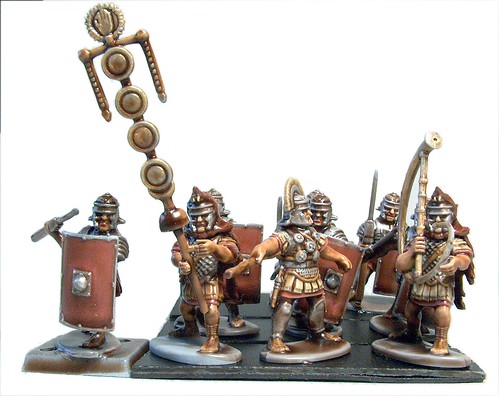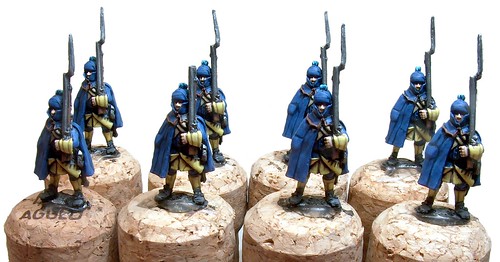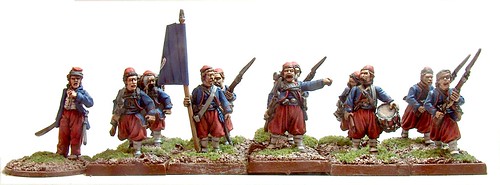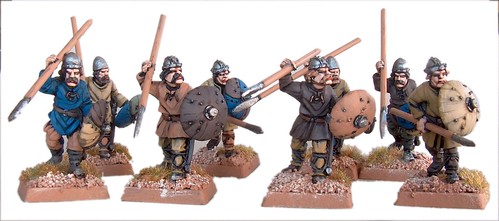Occasionally in the life of a wargamer -- or quite often in some cases --
one gets the idea to start a new period. Today is such a time for me.
I have grown a bit weary of painting what are basically ununiformed more or
less hairy more or less barbarians. The few Copplestone Chinese infantrymen
I painted for our Tintin game gave me a taste for painting uniformed
figures, with all the advantages those have for batch, or dare I say
assembly line, style painting.
So, I was half unconsciously looking to get into a period featuring nice
uniforms. The nicest uniforms around are of course those of the horse and
musket period, so my thoughts quickly settled on that. But what to choose?
Napoleonics and Seven Years War are the main contenders in Europe (ACW and
AWI feature more prominently in the US), but they did not immediately
appeal, possibly because of the popularity. After a while, however, I
stumbled upon a period that has just the right mix of quirkiness and
popularity: the Great Northern War.
For those of you now going _'huh?'_, the Great Northern War took place over
the first two decades of the 18th century in the Baltic area, contemporary
with the War of Spanish Succession (better known as the Marlburian wars) in
Western Europe. It featured Sweden under King Charles XII, then a major
world power, against just about everyone else running around in that area,
most notably the emerging Russians under Peter The Great. At the end of the
war, Sweden was eclipsed and its leading position in the area taken over by
Russia, which became a world power in its own right.
The Great Northern War features Swedes and Russians of course, but also
Poles, Saxons, Danes, Norwegians, and what not. Enough variety to scare a
flock of flamingoes with. Now, being a somewhat less popular period, I'm
having some trouble finding good figures for them in the One True Scale
(28mm). So far, I've found Wargames Foundry, which have some Swedes and
Russians in their Marlburian range, and a manufacturer in the US who is
only
listed with a phone number and might not even be in business any more, but whose figures are nice enough, judging from a review on Magweb. I
haven't looked at Old Glory yet, but they will most probably have at least
a
few suitable bags. Does anyone know of any other suitable figure ranges?
And finally, what about rules? I have really no idea as to what rules to
use, so I 'm throwing that one out to you readers as well - what rules are
good for the early 18th Century Horse & Musket period?




